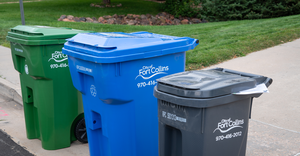How to Design Sustainable Packaging That Resonates with Consumers
Recycled content is leading the pack today, though material makers and designers in quest of a piece of the market are chasing all types of innovations. They are working on packaging made from agricultural waste and captured carbon emissions, among other unconventional sources.

The sustainable packaging market is projected to reach $430.70 billion in worth by 2030— up from $280.48 billion in 2022. This niche segment covers a breadth of options – reusable, recyclable, biodegradable, and packaging sourced from renewable or recycled materials. Recycled content is leading the pack today, though material makers and designers in quest of a piece of the market are chasing all types of innovations.
They are working on packaging made from agricultural waste and captured carbon emissions, among other unconventional sources. They are vetting edible packaging made from seaweed and other plant-based feedstocks. Foldable reusables and even smart packaging that “tells” consumers when food is nearing the end of its shelf life are coming online.
Industrial designer Leadoff Studio makes recyclable, compostable, and reusable packaging, mainly for health and wellness and other consumer goods companies and designs the products those packages hold. The New York City-based company’s customers have ranged from small visionary startups to a few industry giants like Nike, Walmart, and Google looking to stand out as sustainability pacesetters.
Leadoff Studio CEO and Creative Director Jordan Diatlo often talks about creating more value for consumers by adding functionality. Rather than becoming trash after being opened, packaging lives on as a “keepable” with a new purpose.
One pretty “out-of-the-box” application—he’s contrived quite a few—is a design for Talsam that’s used to ship a wearable tech device that looks and feels like jewelry. The packaging doubled as a jewelry box to hold the device, and the top of the container served as a charging tray.
A digital pharmacy wanting to innovate went with packaging made from recycled Tyvek, a brand of high-density polyethylene (HDPE). Like the packaging-turned-jewelry box, the Tyvek application has another life and function too.
“We asked ourselves, how can we create a flat package to reduce shipping costs? We ended up creating a durable Tyvek pouch that not only accomplished this goal but can be used as a toiletry bag or organizational bag,” Diatlo says.
It’s recyclable and designed to be folded and sent back should the client decide to go with a takeback program—an idea it’s toyed around with.
Concept development entails close collaboration with packaging manufacturers, and it starts long before the concept comes to fruition, as there are manufacturing considerations with any design, especially new ones.
“Having that relationship with manufacturers allows us to understand design limitations before we get a quote so we can start earlier in the process. And it lets us move faster through the manufacturing stage,” Diatlo says.
Sustainable packaging designers often share one mantra. Keep the design simple and minimalistic. That rule especially applies if the material is made to be recycled.
In surveys, consumers have said that excess packaging doesn’t work for them. It feels superfluous, and who wants to pay for unneeded material or have to take packaging apart to be able to toss it in the blue bin?
“We try and do as much with mono material as possible, with consideration to the users’ experience and ease of recycling at the end of life,” Diatlo says.
“It’s really about the unboxing experience—opening the box and going through the steps to get to the product. It’s like opening a gift on Christmas. How do you make it a nice experience? One where [consumers] don’t have to think about what to do with the package when they are done with it.”
Increasingly, companies are investing in corrugate applications as an alternative to petroleum-based foam parts. A bulk of Leadoff’s recyclable designs are paper-based, including corrugated cardboard structures; basically a frame that acts as a buffer inside the box to hold products in place. To mitigate negative impacts of sourcing fiber from forests, recycled paper and or Forest Stewardship Council (FSC)-certified materials are Leadoff customers’ first picks.
When they don’t opt for paper, Diatlo and his team skew toward materials that are naturally separated when consumers open the package.
Wolf Gordon supplies upholstery textiles and other materials to architects and interior designers. A nagging pain point for these clients was around Wolf Gordon’s merchandising system—the boxes, bins, and binders that hold mega volumes of material samples.
The containers were thrown out every time a new collection launched, along with the now irrelevant labels that carried the collections’ names. The waste was accumulating fast, and it was time for a new system that aligned with the priorities of these design specifiers—most who are green building professionals. They expect their suppliers to prioritize sustainability too, says Marybeth Shaw, chief creative officer, design & marketing for Wolf Gordon.
Leadoff’s revamp entailed creating a modular system where labels are replaced as the containers’ contents change, and switching all the other components to durable recyclable, reusable, and or biodegradable materials.
“As products change and evolve, our containers are reused for new collections. Nothing is going to the landfill,” Shaw says, adding that as important is, “Now we have a well-designed, sustainable, impactful solution to underscore our graphic identity and brand.”
Diatlo remembers the day when companies were not so keen on investing in sustainable packaging. They were used to plastic and seemed to think the material was synonymous with cheap while they figured recyclable materials were more expensive than throwaways.
The mindset is shifting, albeit driven by emerging policies, whether extended producer responsibility (EPR), plastic taxes, and investors’ and consumers’ expectations that companies disclose what they are doing to reduce their carbon footprint.
With these evolutions, so will come more packaging innovations. New materials. New production methods. New technologies.
As they prepare to keep up with industry trends and weigh their options, Diatlo has this advice for packaging users: “Think about the client, end user, operations, materials and costs. And do it with style. It’s making sure all the bases are covered with a solution that fits the client, the client’s business, and the consumer.”
About the Author
You May Also Like




